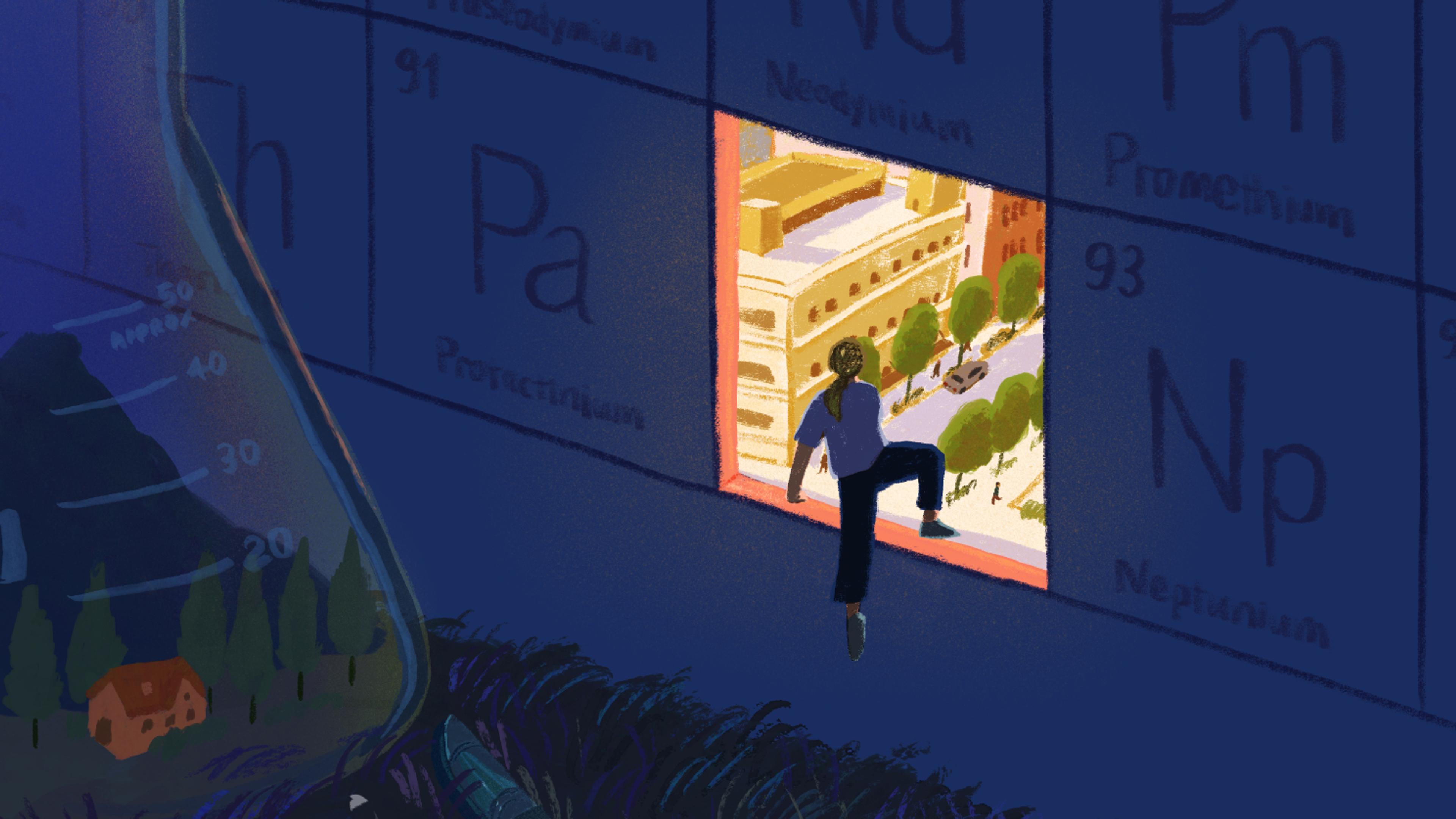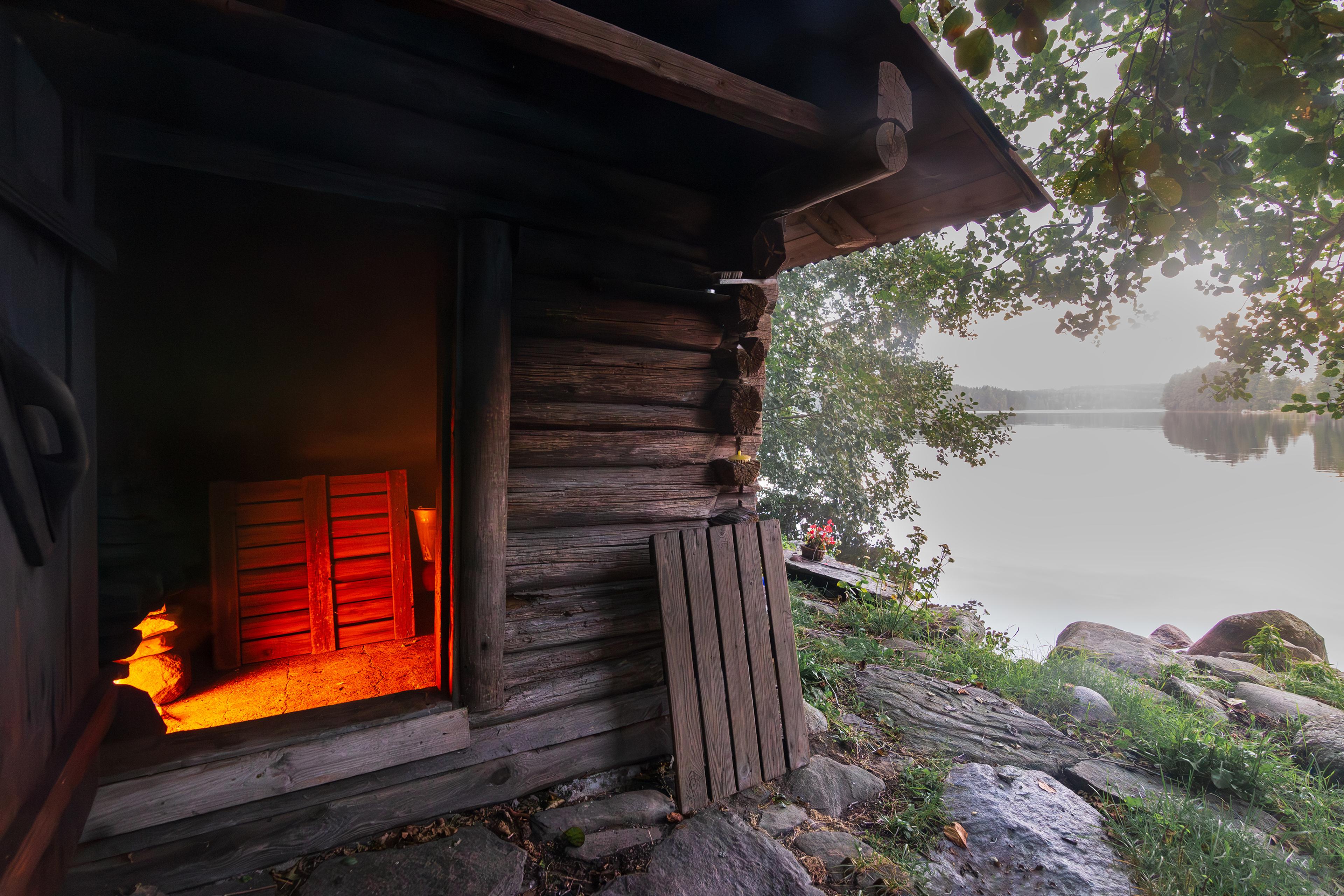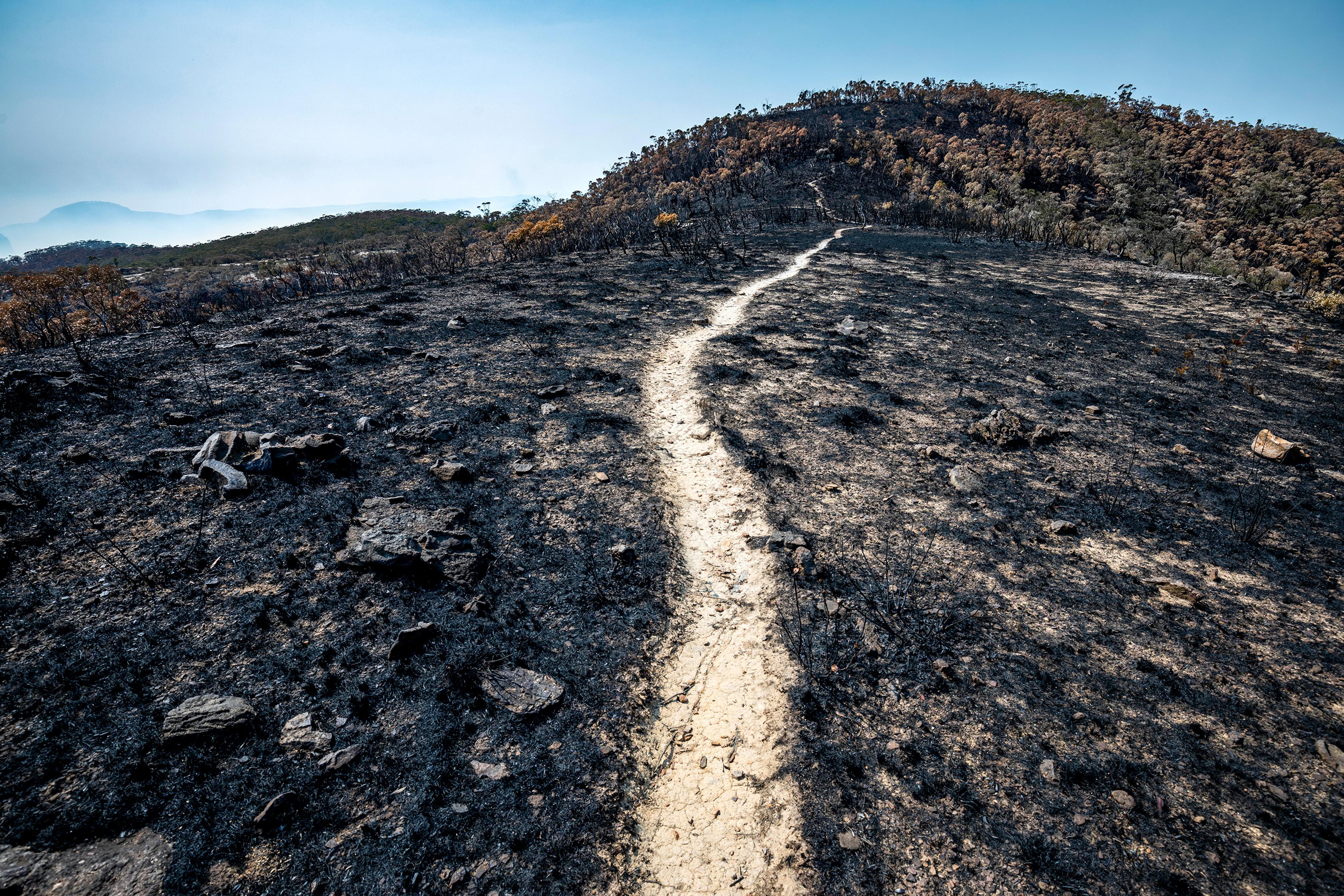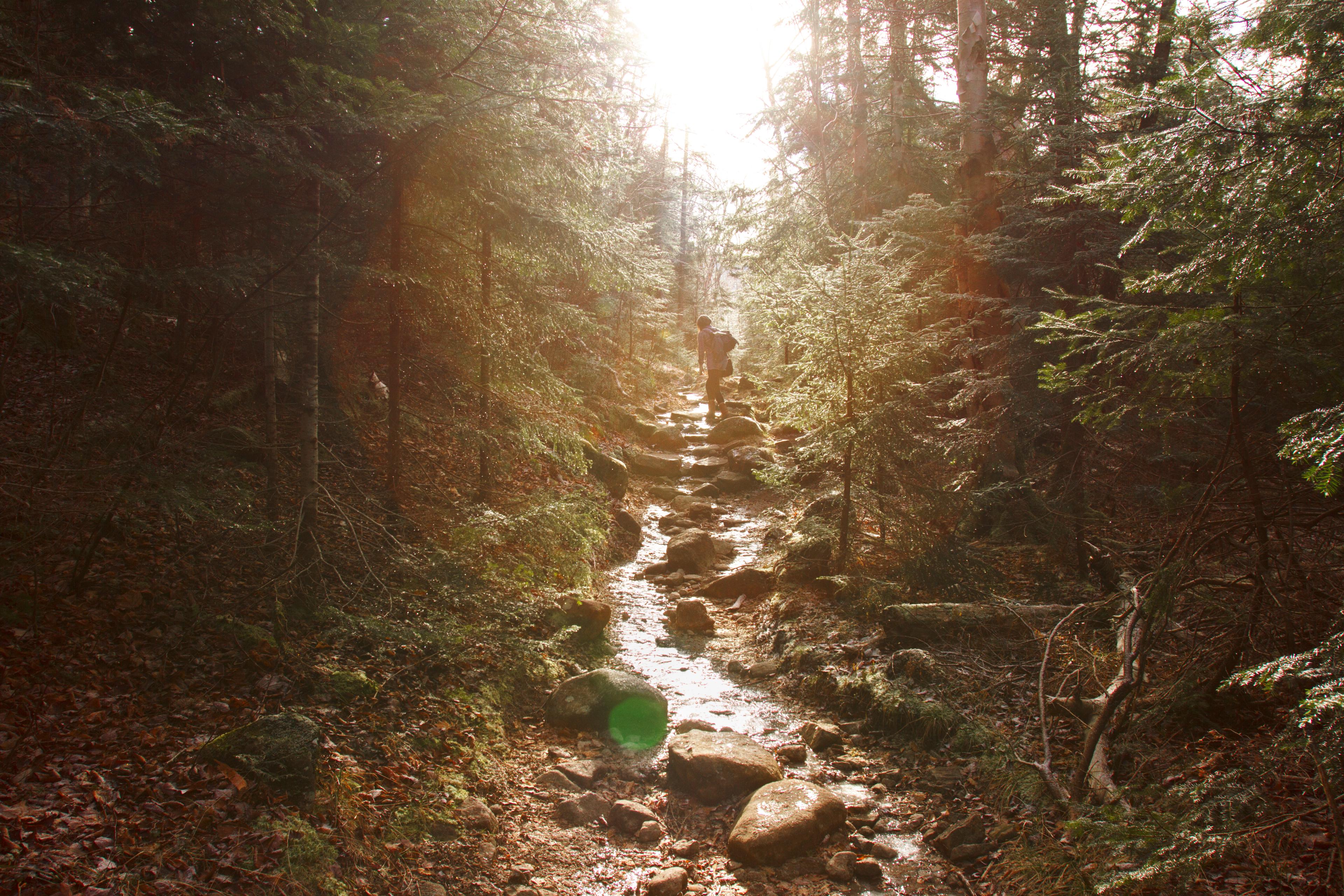I held a butane torch steady, my elbows braced on the kitchen counter, while Nina, my 12-year-old daughter, adjusted her grip on the clamp she was using to hold a test tube. ‘Keep it angled away,’ I reminded her. The thick white mixture in the bottom of the test tube remained unchanged. No difference in colour. No shimmer or jiggle. No boiling.
We had not planned on homeschooling when we moved to the place of our dreams, a small mountain town in Montana. Even after I was caught in a thundering hailstorm when I went for a walk the first day – I didn’t take it personally – I felt welcomed by the clarity of the light and the seemingly endless amount of space, and I naively expected the townspeople to reflect those same qualities. Surely, my husband and I told each other, with hard work and a good attitude, anything was possible, especially under such an expansive ocean-sky. Our daughter took a deep breath of that clean bright air and brought her full exuberant self to her first day of kindergarten. She wore a wildly clashing multilayered outfit she had chosen herself and the red glitter shoes her grandma had sent for her birthday.
We did not understand that this – she – was outside acceptable bounds. We did not understand yet that this small town had an unspoken set of rules and expectations designed to elicit one outcome: conformity. But we would soon learn the price that we – and Nina especially – would pay if we didn’t.
Each day when I picked up Nina from school, a band of girls would bang through the heavy doors, giggling and throwing taunts over their shoulders. I’d catch a flash of Nina’s red jacket as they let the doors slam back in her face. In the car, she would ask me why, and I told her to be patient, that these things take time. But it wasn’t just the children.
One day, Nina’s second-grade teacher called me to come pick up Nina after school. ‘But she was supposed to go home with S,’ I said. ‘I arranged with S’s mom to pick her up – I sent a note.’
When I arrived, Nina was standing outside the classroom. Tears smudged her face. On the other side of the hall, S, her mother and several other girls stood in a knot, whispering.
It’s hard to rescue someone else when you, yourself, are drowning in the same sea
‘What happened?’ I asked as Nina pressed her face into my stomach and sobbed loudly. I pulled her in close.
S had decided she would rather go over to another girl’s house, the teacher explained. ‘Nina’s not handling this very well,’ she said.
‘Well, can’t Nina come too?’ I asked S. ‘You did invite her over.’ I was aware that I was pleading.
S’s mother smiled sadly and said: ‘Really, it’s a shame that Nina is making this so difficult.’
On the way home, I suggested that Nina try not to let them see how easily they could upset her. This was the advice I had gleaned from all the books about bullying I had started reading a while after we’d arrived. I tried everything within my power to help her navigate these waters, but it’s hard to rescue someone else when you, yourself, are drowning in the same sea. I had recently joined a hiking group in hopes of making some like-minded friends, but they kept changing meeting times without informing me. The third time I waited on the bench in front of the coffee shop, wondering where everyone was, I figured out they weren’t coming, at least not for me.
When Nina was in fourth grade, three girls knocked her to the ground at recess and rained down punches and kicks while onlookers cheered. We took Nina out of school then and taught her at home, hoping that would restore some of her lost vitality. I desperately wanted to be adequate for this new role. I felt reasonably confident about my mastery of basic school subjects – until we got to chemistry, which I had failed in high school. Twice.
Chemistry had been my least favourite class back then. I couldn’t see how it was relevant to my teenaged life. I had a deadbeat dad who left my mother, my sisters and me for a woman with three daughters the same ages as us. I had a mother whose rage and disgust spilled out onto those closest at hand, which was me after she kicked out my older sister. I had a full-time job, a self-imposed expectation of straight As and an acute sense of abandonment. At the end of 10th grade, I buckled under the pressure and swallowed down the ‘incomplete’ my chemistry teacher gave me along with a good dose of frustration.
The following year, my new chemistry teacher failed me. ‘I gave you the F,’ he said, ‘so you could learn how to live with failure.’ The night before my teacher bestowed this gift upon me, my boyfriend hit me for the first time. Along with the F, I choked down a toxic mixture of shame and rage, which I carried with me, heavy and undigested, well into adulthood.
Given such a checkered history with the subject, I was not so sure I was the right one to teach chemistry to my daughter. At times, I questioned whether I could teach her anything about living in the world.
As much as we appreciated her qualities, there was, clearly, no place for that combination in this town
Nina’s task during our chemistry experiment was to test four different white powders in various ways, in order to identify them. She peered at the test tube and asked: ‘What’s supposed to happen?’ The sludge in the bottom continued to sit there, looking sludgy. The explosion happened before we heard it – or maybe it made no sound at all except for the ‘Whap!’ of the mixture hitting the ceiling, where it clung like a giant gob of snot. We hooted and snorted, first in surprise and then in relief: no damage done.
Nina slid her chart across and filled in the results. Third column over – Mystery White Powder C – and fourth row down – Mix with water and heat over a flame. She summarised with a succinct ‘Boom.’ Nina is a poet at heart – a dancer and a poet. She has a facility for rhythm, grace, and finding the right words. As much as we appreciated her qualities, there was, clearly, no place for that particular combination in this town. While she mixed and stirred and boiled and burned, a familiar and persistent fear wormed its way into my thoughts: what if she never felt like she belonged? I had hoped that, by homeschooling her, she would feel safe enough to be herself again, but were we teaching her, instead, to retreat?
In ballet class with a different, older set of girls, Nina continued to be attacked – always just out of sight of the supervising adult. When her teacher refused to intervene, my husband petitioned the parents, with limited success, to rein in their children. As if the whole sad thing had been choreographed in advance and we were all to stick to our parts, the people continued to respond to us with the same unperturbed and occasionally violent rejection as the test tube had when it expelled its contents.
Our simple kitchen experiment illustrated that an element’s internal structure, its very own essence, is revealed by its reactions to other elements. Some eagerly combine with others. Some reject anything new. They all have the ability to transform. Was that the answer? To change, to become someone who would fit in better? But we were not yet done with chemistry or, more accurately, it was not done with us – with me, because I was the one who had the most to learn.
Nina and I read that, after the young Dmitri Mendeleev, the father of the periodic table, travelled the length of Siberia in order to pursue his studies – and what internal structure is revealed by that? – he put together a new map of the world, a table in which he ordered the elements according to their specific properties. The patterns were so predictable that, even though there were empty spaces in his original table, Mendeleev could – and did – describe many of the elements that would be discovered after his death.
Why hadn’t any of my chemistry teachers highlighted the beauty of this? That there is a name and a place for every element – known and unknown. There is a larger pattern into which each and every one already fits: We were waiting for someone just like you. Look, we saved a space. Here, just here.
After reading this, I encouraged Nina not just to be herself, but to be more herself.
Eventually, we moved, and Nina found her place in a city full of dancers and poets and innumerable other characters, where vibrancy is run-of-the-mill, where curiosity is more important than conformity. After she got settled, my husband and I moved back to Montana, a choice that I know might seem baffling. It’s like returning to the scene of a crime.
The nearby town that so savagely rejected us has changed. It’s more colourful now. Hopeful, I attended a newly formed writing group – trying again to find like-minded friends. We sat around an enormous table in the back of the local pizza restaurant and introduced ourselves and our current projects, the genres of which formed a delightful array including an academic dissertation on the Stoics, a series of cozy mysteries – literally involving quilting – memoirs and more. The last to make my introduction, I was interrupted by the academic, who informed me at length that my desire to find a published home for my essay was a blemish on my character. I might have laughed off the irony – she had a university publisher lined up for her work – but I was stunned, and as I scanned the faces of the other participants, they avoided my eyes and nodded along with her takedown. When she ran out of breath, another woman asked me: ‘Why are you even here?’
The town is different but also the same. They were still threatened by someone reaching beyond what they wanted – or believed they could try for.
I don’t go to town much at all these days. I didn’t belong there before, and I still don’t. We live on six acres now, but you can’t tell where they end and the rest of the world begins. The only visible boundaries are four distant mountain ranges. The clouds, the flights of birds, the mood of the landscape, all shift moment to moment. There is no fixed shape. In following those changes, I feel quietly and joyfully at home. I am one of those elements that prefers solitude, and I know now where I belong. Here, just here.








